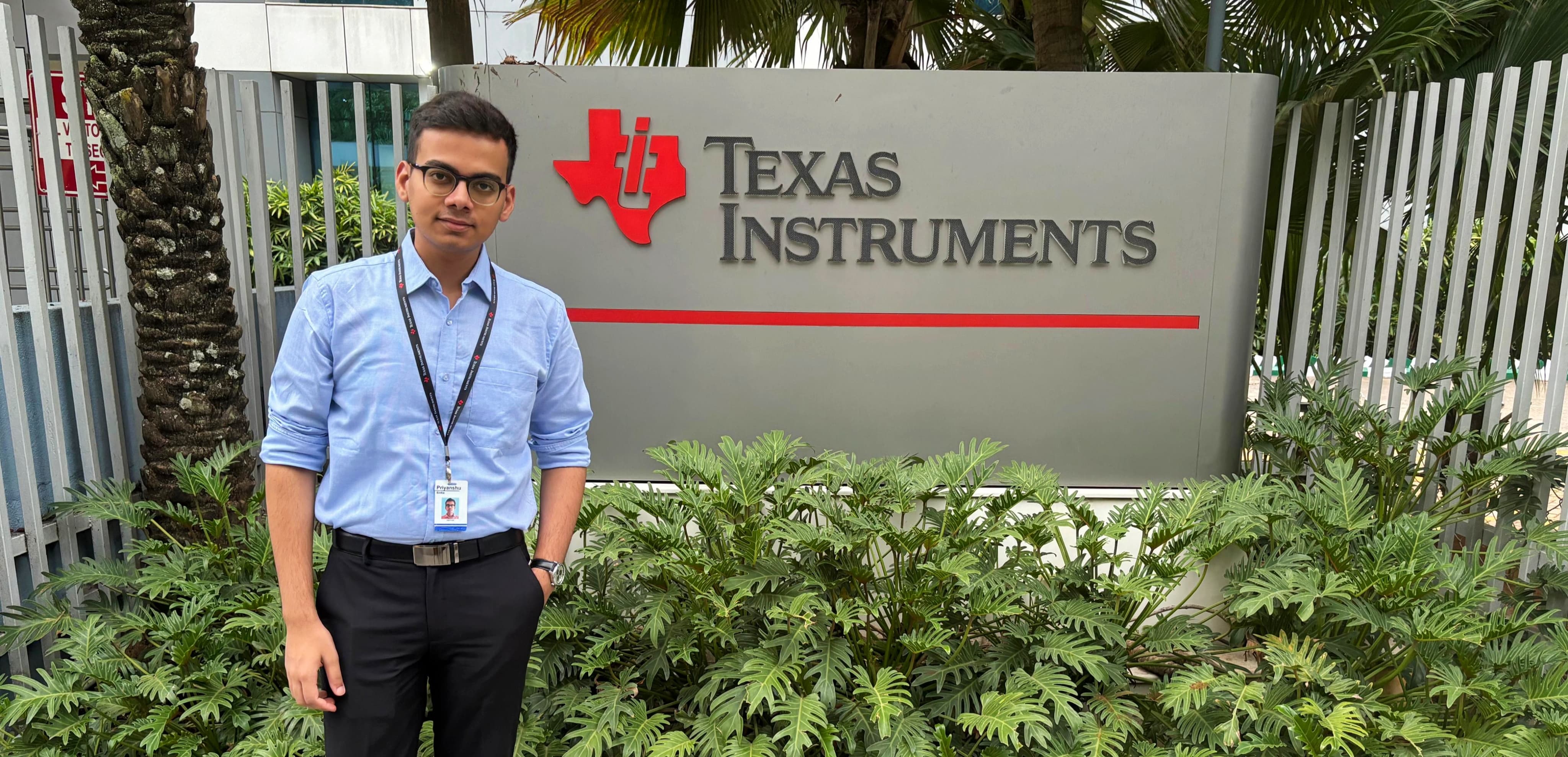06 Dec 2024
•
4 min read
Texas Instruments Internship Experience
From theory to practice, my summer internship at Texas Instruments India.

My internship journey started with a rigorous selection process, including an online assessment, which led to me being shortlisted for interviews in both the analog and digital domains. After successfully navigating the rounds, I secured a position as an analog intern in what was a core engineering role.
As a part of TI’s eFuses and high-side switches design team, my project involved designing a new IP (Intellectual Property) for wire harness protection using the I2T algorithm for TI’s high-side switches product line. While most of the project work for interns around me was in the form of well-defined tasks, I had to morph an abstract idea into a fabricable IC completely.
The first few days were spent learning all about TI’s eFuses and high-side switches product lineup, their features, use cases, technology, and underlying mechanisms. My team gave me an elaborate ramp-up plan with all the study material. At first, I felt overwhelmed by the flood of technical data coming my way, but I felt more at ease after the first week. Although the ramp-up plan helped me a lot, most, if not all, of my gratitude goes to my team for helping me all along the way.
After the learning phase, the real work started, I was excited to jump right into designing circuits, running simulations and doing all the cool stuff one would expect. However, to my surprise, the next thing I found myself doing was writing thermodynamic equations and reading about material science. The plan was to understand the origin of the problem and then come up with an architecture to solve it. The following weeks were spent building the mathematical foundation for the algorithm and identifying the most optimal way to implement it. Once the architecture was finalized, I translated each part into its circuit equivalent, a process that required extensive reading of prior patents and research papers, followed by tailoring them to fit our objectives. Verifying these designs through simulation and presenting my progress to the team quickly became the highlights of my experience.
During my time there, my team consistently reassured me that I was performing exceptionally well. On my final day, my manager informed me that he had recommended me for a PPO, which was later confirmed through a call from the TnP cell. I was over the moon and deeply satisfied with my work. The nature of my problem statement also allowed me to fully showcase my creativity.
Aside from riding the learning curve, another goal I took upon myself was to explore the city and make as many friends. Every weekend, we ventured out to discover new areas, try different cuisines, or simply hunt for the perfect hangout spot. Reflecting on my journey, the moments shared with my team and friends were the most memorable. It was those experiences that made it truly unforgettable.
Here are a few tips for juniors:
How to crack the selection process?
To secure an internship in the analog domain, it’s crucial to focus on mastering the fundamentals. Trust in your college curriculum, it’s designed for a reason. When it comes to CGPA, it directly reflects your understanding of core concepts, so aim to keep it as high as possible.
How to make the most of your internship experience?
Your mentor doesn’t expect you to know everything, but they do expect you to stay persistent and not give up when faced with challenges. Maintain regular communication with your mentor, keep them updated on your progress, and seek feedback consistently. Avoid taking anything for granted, strive to understand concepts from their fundamental principles. Most importantly, keep an open mind, embrace the learning process, and enjoy your time!
PS: Check out my internship experience interview with DTU Times (DTU’s Newsletter) for more insights.